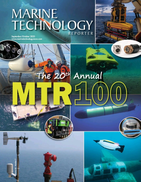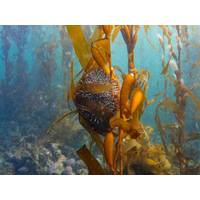
NZ’s Vital Kelp Forests are in Peril from Ocean Warming
benefits to New Zealand. They provide food and habitat for several marine invertebrates and finfish species of both cultural and commercial value, including pāua, kina, moki, snapper, rocklobster, blue cod and butterfish.If seaweed ecosystems are altered, these species will experience changes in food supply and habitat availability.Giant kelp (Macrocystis pyrifera) and bull kelp (Durvillaea spp.) are important habitat formers and food suppliers for other species. But they are also extremely sensitive to the impacts of temperature stress.Marine heatwaves and ongoing ocean warming likely threaten them
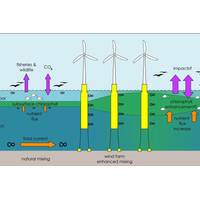
Oceanographers Call for Study on Impact of Floating Wind on Shelf Seas Mixing and Marine Life
for the shallow shelf seas have focused on wildlife using or living within the affected areas. The difference with the deeper seas is that the fundamental functioning of the seas themselves could be affected,” explains Dr. Lincoln.“Turbulent mixing determines the timing and rate of the food supply on which marine ecosystem and key species rely. Flow past deep water wind farms will introduce ‘anthropogenic’ or man-made turbulence, and increase mixing. This fundamental change could lead to significant regional impacts, which must be assessed. However, impacts are not necessarily
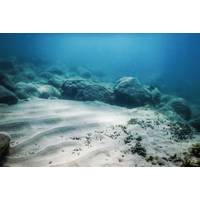
Map of World's Seafloor Takes Shape Despite Crisis
, Mercury or Venus and that charting the depth and shape of the seabed will help understand the impact oceans have on the earth’s climate.As the world’s ocean economy grows in coming years, data will also be vital to boost knowledge of marine ecosystems and marine life as well as future food supply patterns.Seabed 2030, which is working to bring together all available bathymetric data to produce a comprehensive map said on Sunday that the area mapped had risen from 15% to 19% in the last year, from only 6% when the initiative began in 2017.“Over the next year, we anticipate similar
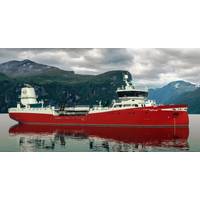
ABB's Hybrid Power and Propulsion for Færøysund Live Fish Carrier
the event of power outage or blackout. In environmentally sensitive areas, stored energy, supported by clean shore power connected via ABB technology, will enable emission-free operation.“This is a very sophisticated live fish carrier whose energy efficiency contributes to sustainability in the food supply chain it serves and in its working environment,” said Sindre Sætre, head of ABB Marine & Ports business in Norway. “Building on years of ABB experience in hybrid power solutions, we are proud to make a first delivery for a ship of this specialized type. The order also
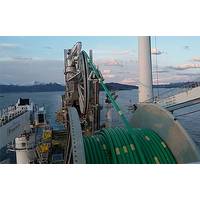
Statoil: High Activity in Deep Waters
the Asta Hansteen field and Sandnessjøen this summer, totalling 17 port of calls. When large construction vessels like this arrive, they lead to buzzing activity, on the base, at Aker’s premises and in the local community in general – involving a range of services from food supply to transportation. “The Aasta Hansteen SURF project has led to major spin-offs in North Norway, for example manufacturing of subsea templates, spooles and suction anchors as well as coating of pipes for the Polarled pipeline and also base services. Drilling on the field will start
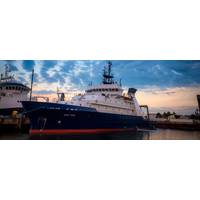
New Research Ship Sally Ride Sails for Home
;s most technologically advanced oceanographic research vessels and will put that technology to work in missions throughout the northern Pacific Ocean. With it, seagoing scientists will work toward goals of fundamental importance to society: preserving the fisheries that are vital to the world’s food supply, discovering new chemical compounds that are the basis for antibiotics and cancer therapies, avoiding the large-scale instability in natural systems that is a consequence of climate change, and filling in the jigsaw puzzle of global tectonics that lets us understand the risk of seismic events

First Offshore Aquaculture Development Green Lighted
fish, the concept delivers significantly improved yields that will prove important in the decades to come as part of Norway’s strategy to leverage its aquaculture and offshore expertise to meet the challenges of accelerating population growth and the pressures this places on the world’s food supply chain,” commented Egil Haugsdal, President, Kongsberg Maritime. “To succeed in placing fish farming in exposed areas as a viable solution to address the food gap challenge, we need to integrate and harmonize a wide range of maritime and offshore technologies, for the fish
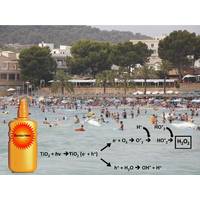
Sunscreen Ingredients Might Harm Marine Life
;The onslaught of pollutants in our oceans, from giant islands of plastic in the Pacific to tiny nanoparticles, cannot continue,” said John Kaltenstein, Marine policy analyst with Friends of the Earth. “We must quickly address these threats to marine life and fisheries upon which our food supply depends.” Nanomaterials reflect a convergence of chemistry, physics and engineering at the nanoscale to take advantage of unique physical properties associated with chemicals in this small size range. Nanoparticles are measured in nanometers (nm); one nanometer is billionth of a meter
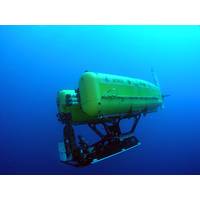
Exploring One of the Deepest Ocean Trenches
be devoid of life, trenches may actually be home to many unique species. For one reason, there is growing evidence that food is plentiful there. While it is still unclear why, organic material in the ocean may be transported by currents and deposited into the trenches. In addition to looking at how food supply varies at different depths, the research team will be investigating the role that energy demand and metabolic rates of trench organisms play in community structure and how these biological systems differ from their shallow water relatives. "The energy requirements of hadal animals have
 August 2025
August 2025


